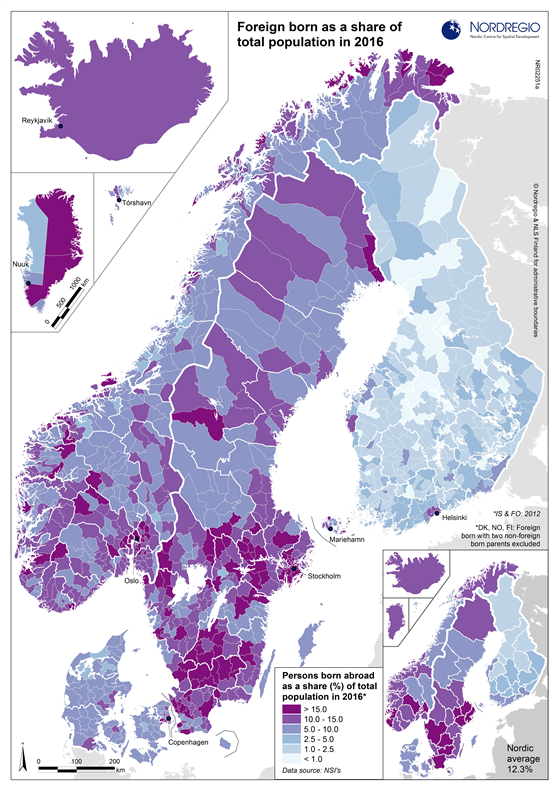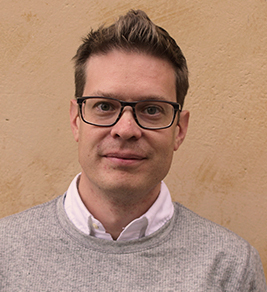This map shows the number of foreign born inhabitants as a share of the total population for Nordic municipalities and regions in 2016. The darker colours show municipalities/regions where higher shares of the population were born in a foreign country and the lighter colours shows municipalities/regions where the share is lower.

While the share of foreign-born people in the population is a good indicator of overall immigration, it is less useful when it comes to studying refugee populations. This is largely because these statistics do not include information about the countries of origin of the foreign-born population.
There are also differences between countries in the way “foreign born” is defined. In Finland, Denmark and Norway, children born in a foreign country who have two parents who are not foreign born are excluded from the statistics. Although this category is quite small it results in a slightly higher statistical share of foreign-born inhabitants in the other countries.
At the national level, Sweden has the highest share of its population born in a foreign country (17%) and Finland the lowest (5.2%). Zooming in to the regional and municipal level, populations which include the highest share of foreign born inhabitants can be found in border municipalities such as Haparanda (40%) and in larger cities such as Oslo (27%), Stockholm (24%) and Copenhagen (18%). In Finland, the cities with the highest share of their population born in foreign countries are Helsinki and Espoo (12% each) and Turku (8%). Otherwise, in 53 of the 311 Finnish municipalities less than 1% of the population were born in a foreign country.


